
Apple Privacy Changes – What Does it Mean For You?
It’s all kicking off here in the UK as it turns out we don’t have enough delivery drivers to keep our petrol stations stocked up.
So I’ve dumped the car on the driveway with 3 miles left in the tank and decided on a much healthier alternative.
Namely, staying in the house and drinking whisky. That’ll sort it.
 ^^ The aptly named Phil McCann reporting…
^^ The aptly named Phil McCann reporting…
On the business side of things, I’ve had a lot of questions come through about how Apple’s privacy changes might make your life a lot harder if you’re trying to market your books.
Or, how they won’t make any difference at all.
(It depends on what you’re trying to do).
So in an effort to de-mystify the whole thing, here’s the story so far:
![]()
Apple’s big Privacy Changes
Blocking Cookies and Tracking
Back in March, Apple announced its latest iOS software (that’s installed on all Apple mobile devices) would now prevent app owners from tracking user activity outside their own app.
Meaning, for example, if you were on Facebook, then used Safari to visit a site, that site owner would no longer know you visited them (and you wouldn’t get those creepy “did you forget something?” ads in your feed).
It also meant that advertisers would find it much more difficult to see which of their ads resulted in a sale – or lead – because that data wouldn’t be shared with you (note – the data still exists, you just don’t get to see it anymore).
It also makes it more difficult to target users who visit your site, perform certain actions, or those people who might have interacted with you in some way outside of the advertising platform’s own app.
Worrying? Not really.
![]()
As authors, you’ve never really been able to tell who buys your book from an ad – because that data is held by Amazon and the other stores. So no loss there.
And if you want to track the effectiveness of ads to lead capture pages, you can just set up unique landing pages for your ads – or use UTM code in your links – that will do this job for you.
And if the user clicks a link inside the Facebook app on their phone (for example) the webpage will usually open inside the Facebook browser, meaning the clicks can be tracked through to your site. No loss there, then.
Want to run ads to people who visited your site? Just create a lookalike audience of your email list.
Or run video ads and run retargeting ads to those who watch a certain amount of it. Then create lookalikes.
And so on.
Added to the fact that conversion tracking on platforms like Facebook were never particularly great anyway, and the impact for authors (and most businesses that aren’t selling apps) is fairly manageable. For authors, it’s likely most people won’t notice the difference.
So, panic over.
But wait, there’s more.

Email Pixel Blocking
Every email that gets sent out from (most) modern email marketing platforms contains an invisible pixel – which fires off when the email is opened. This tells you whether someone has opened your email or not.
For years, big newsletters relied on “open rates” to judge the effectiveness of their campaigns and provide a baseline value for their reach (if they were selling ad space in their newlsetters, for example).
With recent iOS changes, these pixels are now blocked. Meaning every email you send to an iPhone user will show up as “opened”, whether it has been or not.
So it’s “bye bye” to effecive open-rate tracking.
Worrying? Not really.
![]()
The “open rate” metric has always really just been one of several ways to measure the effectiveness of your email campaigns. And it wasn’t even the most useful.
All your “open rate” tells you – in reality – is how effective your subject line was.
And in our experience – sending millions of emails a year – we’ve found that the difference between a great subject line and a terrible one would only result in about 7-8% difference in the number of people opening the email.
(It often didn’t affect the number of clicks we had, though. And it could never tell you whether those people actually READ the email).
So while your ability to track open rates might have gone down the toilet, your click rates and conversion rates are really the place to focus (and always have been).
In other words, this change shouldn’t influence the way you send email.
You should still aim to send emails people actually want to read – and if you want to track effectiveness, focus on the metrics that matter: clicks and sales.

Anonymous Email
In addition to blocking tracking pixels in email, Apple will now make it possible for users to sign up for newsletters using a unique, anonymous email address – meaning the users actual email address is never revealed.
Instead, this auto-generated email will be created solely for the purposes of joining an email list (or registering for a service) and all incoming mail will be forwarded to the users’ actual email inbox automatically.
If the user no longer wants to receive those emails, they simply turn off the auto-generated email address and it’ll stop working.
Meaning… if you’re building an email list, you might actually never get your hands on your readers’ email addresses.
Worrying? Not really.

Our goal as marketers isn’t “to get the email address”. It’s to open up a line of communication with people and deliver them value.
Apple’s email anonymity system will still be more of a hassle for the user to take advantage of than it would be for them to click the “unsubscribe” link or send your messages to junk.
In other words, why would someone go to the hassle of turning off the email forwarding when they can easily unsubscribe anyway? The end result is the same = they don’t get your emails any more.
It’s been a legal requirement for years to include an unsubscribe link – so I can’t see this having any major impact on your emails hitting inboxes.
The only instance where it might cause issues is if you’re building advertising audiences based on email addresses – in which case, you can still use the other approaches I’ve mentioned above.
Once again, the goal is to send email that people WANT. If you’re doing that already, these changes shouldn’t cause too much disruption.

Why is Apple doing this?
There’s two schools of thought here.
The first is that Apple is a benevolent force for good and they have your best interests at heart.
Only kidding. Nobody thinks that.
No, the growing consensus is that Apple wants to make it more difficult to use third-party advertising platforms to reach its users.
Why? Well, no prizes for guessing: Apple want a slice of the advertising pie.
- Apple’s ad revenue last year was in the region of $3B.
- Amazon raked in over $22B
- Facebook saw $84B
- Google? They gobbled up $147B.
So how does Apple catch up?
By making it harder for their competitors to serve effective ads – so they can offer an alternative option and take some of the market share.

So there you have it. Yes, some aspects of marketing and advertising are going to get a little trickier – for some people.
For you, as an author? It’s business as usual. Keep on applying the fundamentals:
- Write great books
- Ensure they’re presented the best way possible (covers, editing, formatting, reviews, description)
- Build an email list (an audience you control)
- Develop your email marketing skills so you can run effective launch and promo campaigns
- Invest in advertising when it makes sense (and you have the catalogue to support it)
- Repeat.
Of course, as I’ve said, it all sounds simple when you list it out like that.
But like anything worthwhile, getting the hang of building up your author career takes time and patience (not just searching for hacks, loopholes, and “the next shiny thing”).
If you can build a system and a process to handle each of those steps above, you WILL get there.
So that’s what we’re going to focus on for the next couple of weeks – breaking down each part of the “machine” and seeing how it all fits together.
More on that soon.
In the meantime, if you found this article useful (and got all the way to the end) check out the section below for a “word from our sponsors”. I think you’ll dig it.
Yours,
Nick Stephenson
Your First 10,000 Readers
![]()
Sponsored: The Ultimate Author MegaBundle
60+ author tools, software, discounts, courses, and books for only $49 (97% off).
CLOSING TONIGHT – SEPT. 28th AT MIDNIGHT











